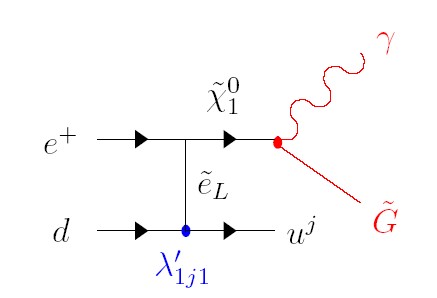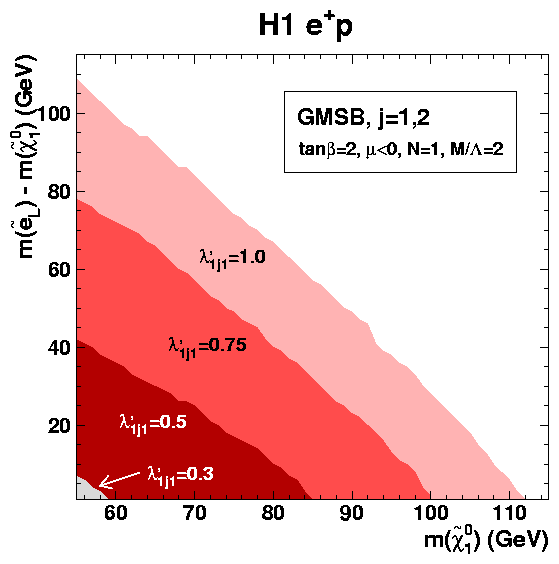
Search for Light Gravitinos in Events with Photons and Missing Transverse Momentum at HERA |
The concept of symmetry is of crucial importance in physics in general, and in particle physics in particular. A new symmetry, called supersymmetry, was introduced in the 70's which connects matter particles (fermions) and the force carrier particles (bosons). This link allows the elimination of one of the problems of the "Standard Model", the theory which reflects our current understanding of particles and their interactions.
Supersymmetry (SUSY) is believed to apply exactly only at the highest energies, well above the energies achievable in particle accelerators. At lower energies, remnants of supersymmetry are expected to be observable in the form of new particles, one new fermion being associated with each boson and vice-versa. The mechanism which mediates the breaking of the supersymmetry from high to low energy scales is not yet known. Several scenarios can be considered, which predict very different masses for the new, supersymmetric, particles. The data taken by the H1 experiment at the ep collider HERA have been used to search for supersymmetric particles. Previous searches considered a scenario in which the supersymmetry breaking is mediated by the gravitational interaction, and focussed on searches for squarks, the supersymmetric partners of quarks (see here, and here). This paper presents the first SUSY search at HERA in a scenario called "Gauge Mediated Supersymmetry Breaking", in which in addition no conservation of the so-called R-parity is assumed. In this scenario squarks are usually very massive, while the supersymmetric partner of the graviton, the gravitino, has a very small mass.

| At HERA, the so-called neutralino, which is an admixture of the SUSY partners of the photon and of the Z boson, could be produced via the exchange of a selectron, the SUSY partner of the electron. This is sketched in the diagram on the left. In the considered scenario, the neutralino decays into a photon and a gravitino, the latter being undetected and taking away some missing energy. |
The signature searched for consists of a photon, a jet which is formed by the quark which is picked up in the proton and interacts with the selectron, and an imbalance in the visible energy. Such final states can also occasionally be induced through known physics processes. It is thus necessary to exploit the topology of the expected signal in order to enhance the signal to noise ratio. Only one such potential gravitino event is observed in the data, which is consistent with the expected background level.
This analysis did not discover SUSY,... but it does allow some constraints on the masses of the selectron and of the neutralino to be set. An example is shown in the figure below. The colored domains illustrate the regions in which these particles are excluded. These depend on the strength of a parameter, lambda', which determines the rate at which SUSY events would be expected. When lambda' is of the order of one, neutralino and selectron masses of up to 112 GeV and 164 GeV can be ruled out, respectively.
Upper bounds on the R-parity violating coupling lambda' can also be derived from this analysis. These are the first constraints on this parameter which are fully independent of the squark masses.
